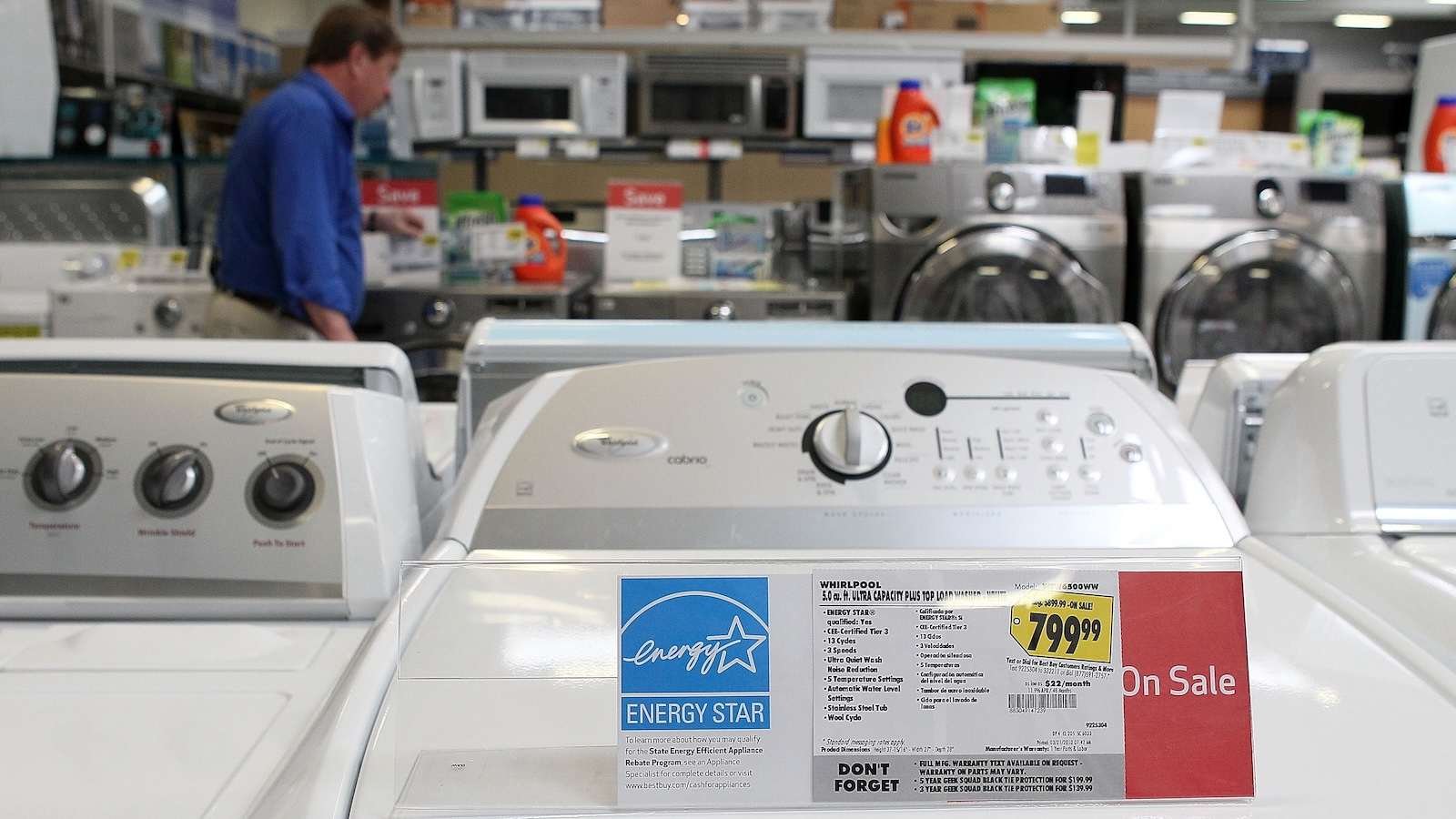When the Environmental Protection Agency’s plans to eliminate the Energy Star program became public, pushback from environmental groups was expected. The government-funded labeling system helps consumers identify energy-efficient products and practices, saving them $40 billion annually in energy costs. Since its founding in 1992, Energy Star has helped avoid at least 4 billion tons of greenhouse gas emissions and has been lauded as one of the most effective decarbonization tools in U.S. history.
But over the last few months, a broad and unexpected coalition of industry groups has come out in support of the program. They range from the American Chemistry Council and the National Association of Home Builders to the Spray Foam Coalition, American Bakers Association, and the Pool and Hot Tub Alliance. The American Chemistry Council regularly fights the EPA’s regulation of power plants, and the Pool and Hot Tub Alliance’s previous lobbying efforts have promoted natural gas use in homes. Now, they find themselves aligned with environmental groups like the Sierra Club in defending Energy Star.
It’s an “interesting bedfellows” situation, said Justin Koscher, president of the Polyisocyanurate Insulation Manufacturers Association, which represents manufacturers of a type of rigid insulation used mostly in commercial roofing projects. “It’s not too often you get all of those groups saying the exact same thing on one particular issue.”
Most Americans recognize Energy Star from the iconic cyan-and-white logo on appliances like light fixtures, computers, and refrigerators, signaling that a third party has certified that the product uses less energy than other comparable options. But entire homes and buildings can also be certified as energy-efficient, and the Energy Star Portfolio Manager helps building managers track energy use. Residential and commercial buildings combined make up about a third of the country’s total energy use, and nearly a quarter of all commercial buildings in the country use the tool. Energy Star incentivizes energy-efficient building practices, guides appliance choice, and drives demand for products like insulation. Koscher worries that if Energy Star disappears, so might the incentive.
Energy Star Portfolio Manager is also the basis for how cities and counties across the nation measure whether buildings within their borders are complying with local-level energy-efficiency regulations. Almost 50 municipalities — and a few entire states — rely on the program, according to the Energy Star website. If Energy Star is privatized or eliminated, there’s currently no adequate replacement, said Paula Cino of the National Multifamily Housing Council, a group representing apartment building owners, developers, and managers.
Energy Star certification can be good for landlords’ bottom line. One study found that after an office building earns the label, rents in the building go up even as utility costs — an indicator of how much energy the building is using — remain unchanged. That suggests the program may be boosting the market value of already-efficient buildings without necessarily reducing energy use. Since the program is voluntary, its opt-in nature also appeals to organizations that prefer it over stricter, local electrification mandates. In March, Cino’s group sent a letter to Trump administration officials asking to roll back a lengthy slate of building and appliance efficiency standards. But even so, the group sees value in Energy Star’s tools.
“There is still a tremendous need for building owners to be able to understand how their building is using energy, and that is expressly what Energy Star Portfolio Manager provides for the business community,” Cino said.
Support for Energy Star in Congress is bipartisan. In July, the Senate Appropriations Committee approved $36 million in funding for the program. The House Appropriations Committee also passed a bill that sets Energy Star’s funding floor for the upcoming year at $32 million. Both are a far cry from the White House’s stated interest in zeroing out funding for Energy Star altogether. But final approval of funding appropriations for the EPA is still months away.
In the meantime, Koscher, the insulation representative, is waiting to see how the future of Energy Star impacts his business. “The Energy Star program is one of those prime examples of where government gets it right,” he said. “We should be looking for more opportunities to create programs like this that deliver a significant return on investment on taxpayer dollars, not doing less of it.”
toolTips(‘.classtoolTips4′,’The process of reducing the emission of carbon dioxide and other greenhouse gases that drive climate change, most often by deprioritizing the use of fossil fuels like oil and gas in favor of renewable sources of energy.’);
This story was originally published by Grist with the headline The unlikely coalition fighting to keep Energy Star labels on your appliances on Aug 6, 2025.















